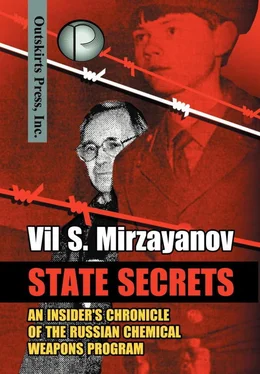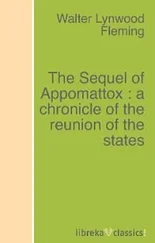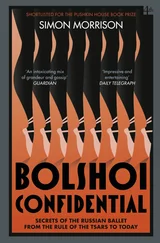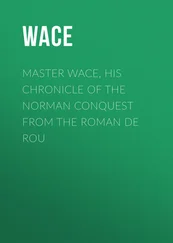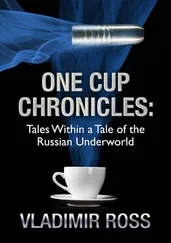Chemical agent A-232’s major advantages were its ability to withstand cold temperatures and its ability to circumvent the list of chemical agents to be controlled by forthcoming Chemical Weapons Convention (CWC). According to the projected list of controlled chemical agents and precursors listed in the schedules of the CWC, there were no agents or precursors included which were from class of phosphates with the CH 3-O-P – radical, because the majority of agricultural phosphoorganic chemicals (such as pesticides and herbicides) have this radical. Known phosphoorganic chemical agents are phosphonates (with the CH 3-P radical). Since agents A-232 and A-234 were phosphates, they were ideal agents for concealing and cheating the inspectors supervising the implementation of and compliance with the CWC.
In order to accomplish the field testing at Nukus, GOSNIIOKhT constructed pilot plants which made hundreds of kilograms of A-232 for testing. GOSNIIOKhT’s Volsk and Volgograd branches performed the scale-up of the production technology and made “experimental” quantities “a few tons” of this agent. Field testing for agent A-232 was just as successful as it was for agent A-230, and the Soviet Army also approved it as a warfare agent.
It was impossible for the Soviet military-chemical complex to hold out against the temptation to create a binary weapon on the basis of agent A-232. Luckily for them, the theme of “Khoryok” was a proper fit for the realization of their dreams.
To that end, an independent scientific sector was organized in 1987, headed up by Dr. Igor Vasiliev, under the direct supervision of Director Petrunin. The basic model of the reaction between cyanide of methoxyflurophosphonic acid and amidin was chosen:
F
D
CH 3O-P=O + H-N=C(CH 3)-N(C 2H 5) 2’
\
CN F
D
CH 3O-P=O
/
N=C(CH 3)-N(C 2H 5) 2
Certainly there were many unresolved problems connected with the choice of temperature, the rate of supply of reagents, the mixing regime, the choice of promoters of the reaction and the chemicals for the elimination of hydrocyanide as a by-product of reaction, etc.
Everything was rolling along very well, until a disastrous accident occurred, which delayed development of this version of Soviet binary weapon almost for one full year. During laboratory experiments, part of a rubber tube, through which exhaust gases of the reaction were traveling from the reactor to the on-line IR-spectrometer, ruptured and began leaking poisonous agent A-232 into the laboratory air. This happened right next to the hood where my good friend and research engineer Andrei Zheleznyakov was working. Andrei started to feel dizzy, and he immediately reported to Vasiliev that he was experiencing blurred vision consistent with chemical poisoning. However, Vasiliev couldn’t find a better solution than offering him a glass of alcohol. Andrei collapsed next to the Metro station when he left GOSNIIOKhT. He was taken to Skilofosovskaya Emergency Hospital where the doctors had no idea how to treat him. [40] For more on this accident, Will Englund, “Russia still doing work on chemical arms”, The Baltimore Sun , October 18 1992; Oleg Vishnyakov, “I Was Making Binary Bombs,” Novoe Vremya 50, December 1992, 46-9, trans. in FBIS-SOV-92-242, 16 November 1992, 25.
When the KGB started prosecuting me, Andrei was the first to support me. His interviews with the Baltimore Sun and the Russian magazine Novoe Vremya were critical in helping the world learn about the Novichok binaries. We never saw each other again after I was jailed in Lefortovo, but we often spoke on the phone, which we both knew was bugged by the KGB. Andrei was a jovial fellow, a good scientist and an extremely talented wood carver. Before the laboratory accident, a few prominent artists invited him to work in their studios, but the poisoning robbed Andrei of his concentration, his regular job, and his creativity. Journalists who regularly approached him for interviews treated him with indifference, and Andrei gradually stopped communicating. Andrei Zheleznyakov was an honest and thoroughly decent person. It was tragic that he lost his life to the very weapon he helped to create and revealed to the world. Most of those who knew of his poisoning never did anything to help save his life.
Though this accident delayed the completion of the binary weapons project on the basis of agent A-232, it didn’t stop it entirely. This theme showed so much potential that the Central Committee of Soviet Union under its First Secretary, future Nobel Peace Prize laureate Mikhail Gorbachev, and the Council of Ministers of the USSR secretly issued a formal resolution [41] The work was done under the Central Committee and the Council of Ministers Resolution no. 844-186, 6 October 1989 and Ministry of Industry Decree no. 22-2, 9 December 1989. In Annex 21, see Top Secret Letter no. 1846 ss from Martynov to Shabunin, 24 November 1992; in Annex 31 see also “The Technical Order for the Compound Part of the Experimental Design Work of ‘Substance A-232’ On the Basis of the System of Components; The Code ‘Novichok-5,’” Top Secret Document 2187 ss/khf, signed on 4 May 1990 by GOSNIIOKhT Director V.A. Petrunin, on 27 April 1990 by Chief of 4984 VP MO E.A. Umbliya, on 16 May 1990 by Chief of 458 VP MO N.G. Ragulin, and on 16 May 1990 by NPO Basalt Director A. S. Obukhov. (Moscow: Russian State Scientific Research Institute for Organic Chemistry and Technology, 4 April 1990).
for the implementation of the project. Gorbachev signed this document almost immediately after the US and USSR governments signed the Wyoming Memorandum, a special “memorandum of understanding” about chemical disarmament, [42] See the 23 September 1989 Wyoming Memorandum of Understanding between the United States and the USSR, which provided for data on their respective stockpiles to be exchanged in two phases and for a joint verification experiment.
on September 23 1989.
Despite of all the complications caused by the Democratic Movement in Russia and the collapse of the Soviet Union, the military-chemical complex of Russia still managed to accomplish its mission and successfully test a binary chemical weapon based on deceitful agent A-232.
A Successful Binary Weapon Based on Substance 33
The prominent Engineering Department of GOSNIIOKhT was an important place for the development of CW production technology. The main tasks of this department were to maximize the automation of the production of chemical agents and to research and test equipment in order to regulate the technological process. This included the automation of the sampling process and the analysis of probe samples which were collected. I collaborated extensively with the associated lab department on this job, and I often took business trips with the employees I worked with. I worked with Leonid Vishnevski, who was head of the laboratory in 1967, on introducing chromatographic methods of analysis to the Kazan plant “Orgsynthesis”, which produced ethylene oxide.
This department was very strong throughout. I think that the well-known scientist and professor Nikolai Bogatkov-Korsakov was to a large extent responsible for this.
Unfortunately, he had a very erratic and independent nature, often clashing with Director Ivan V. Martynov. In 1975, Martynov responded to this behavior with a hotly worded statement, and he fired Professor Bogatkov-Korsakov with great pleasure. In his place, Martynov inserted Henri Kazhdan, who was the son in law of the aforementioned Aleksander Smirnov, chief of the Chemistry Department of the Central Committee of the CPSU.
Читать дальше
